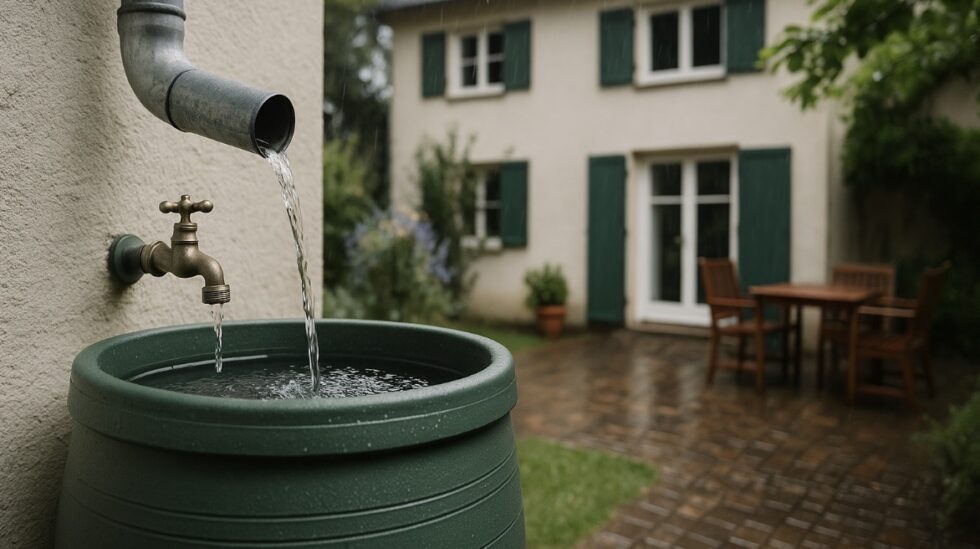In Germany, an increasing number of private households, municipalities, and environmentally conscious property owners are returning to a time-tested ecological solution: collecting, storing, and utilizing rainwater. This shift is driven by a combination of factors, including prolonged droughts, rising costs for drinking water, and growing awareness of the need for sustainable water management.
As urban water infrastructure comes under pressure and resource scarcity becomes a reality even in temperate regions, collecting rainwater is no longer seen as a rural tradition but as an essential element of future-oriented living.
This raises important questions about legality, efficiency, and health standards: What forms of rainwater harvesting are permitted under German water law? What uses are classified as safe? And how can rainwater be collected, filtered, and stored properly—whether for garden irrigation, toilet flushing, or general household utility?
These questions are central to sustainable building practices and modern environmental planning. This article provides a comprehensive overview of the legal framework, recommended collection methods, and practical applications for domestic rainwater use in Germany.
This article, as reported by G.Business, offers a factual, regulation-based overview of rainwater use in Germany, including five tested and safe methods for collecting it at home or in private gardens.
Is it legal to collect rainwater in Germany
Yes. Rainwater collection is legal and supported by both environmental standards and many local governments. According to German water management laws, private individuals are permitted to collect rainwater on their property using approved containers or underground systems.
However, certain large-volume systems, such as underground cisterns connected to household plumbing (toilets, washing machines), must be registered or approved by local authorities under the Landeswassergesetz (State Water Act). Additionally, rainwater must not be discharged onto public land, into open waterways, or across property boundaries without permission.
Is rainwater safe to drink
No. Rainwater collected from roofs or other exterior surfaces does not meet drinking water safety standards and is not suitable for consumption under German regulations. The Drinking Water Ordinance (TrinkwV) requires water for human consumption to be free from chemical, microbial, or particulate contamination – conditions that rainwater cannot guarantee without industrial-level purification.
Even in rural areas, untreated rainwater may contain bird droppings, pollen, heavy metals (from roofing materials), or dust.
What can rainwater be used for legally
Rainwater is legally allowed for non-potable uses, especially where direct human contact is limited. These include:
- Irrigation (lawns, vegetables, flower beds)
- Cleaning outdoor surfaces or tools
- Flushing toilets (with separated systems)
- Washing machines (with additional filtration)
- Filling ponds or water features
It may not be used for:
- Drinking or cooking
- Bathing or showering
- Cleaning dishes or preparing food
Legal and administrative considerations
- No nationwide volume limit exists for private rainwater collection, but system registration may be required if it feeds household plumbing.
- Greywater use, such as toilet flushing, may trigger wastewater fees in some municipalities if discharged into the sewer system.
- Drainage rules apply to overflow or uncollected rainwater: it must remain on the property unless special permits are granted.
Always consult your local building or water authority to ensure compliance. Unreported systems or incorrect drainage may lead to fines.
Five practical tips for collecting rainwater safely and efficiently
- Install a certified downspout diverter
A “Regendieb” or rain diverter connects to your downpipe and channels rain into a barrel while filtering out leaves and debris. It is inexpensive, easy to install, and legally compliant. - Use sealed, UV-protected containers
All collection barrels or tanks should be lightproof and sealed to prevent algae growth and mosquito breeding. A secure lid also reduces the risk of accidents. - Avoid first-flush runoff
After a long dry spell, the first few liters of rainwater from the roof may contain accumulated dust and contaminants. Allow this runoff to drain before collecting usable water. - Choose shaded, stable placement
Place rain barrels on a level, firm surface in the shade. Avoid direct sunlight, which increases algae growth and evaporation. For optimal flow, slightly elevate the container on a concrete block. - Use the collected water promptly
Do not store water indefinitely. Use it within 7 days, especially if it is not filtered. For longer storage, consider a closed tank with an integrated sediment filter and pump system.
Legally approved, ecologically necessary – but not drinkable
In Germany, collecting rainwater is a legal and environmentally responsible practice, as long as it follows clear rules. It cannot replace drinking water, but it significantly reduces potable water use for gardens, sanitation, and non-contact cleaning. As drought conditions and environmental pressures increase, more citizens are turning to rainwater as part of sustainable resource planning. Legal compliance, correct storage, and system hygiene remain essential to avoid penalties and to protect health.
Also worth reading to stay informed: Building in 2025: Solar Mandates, Green Loans & Tax Reform Reshape German Housing.






